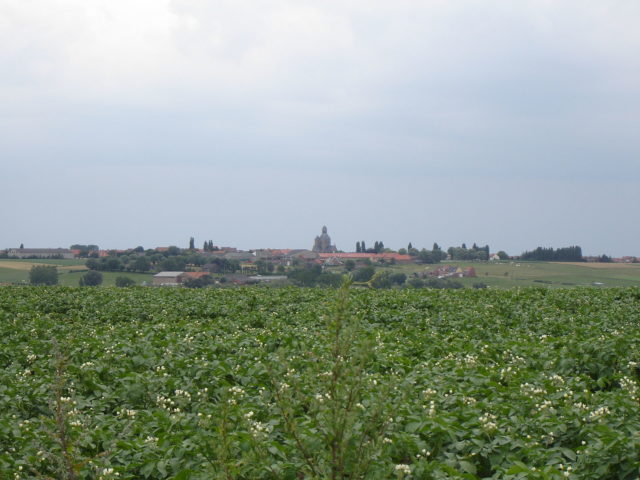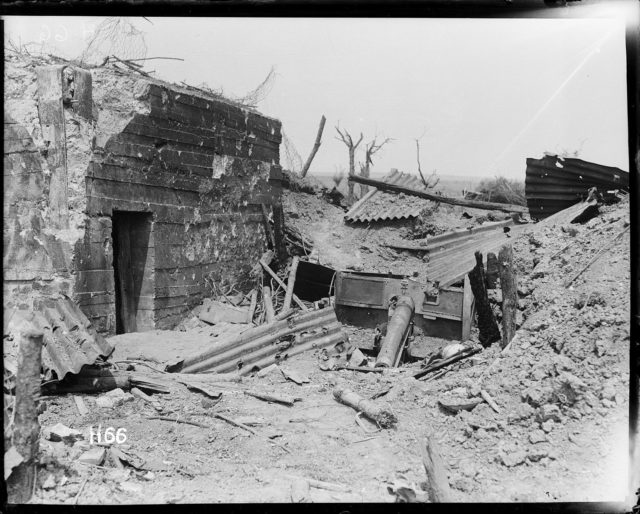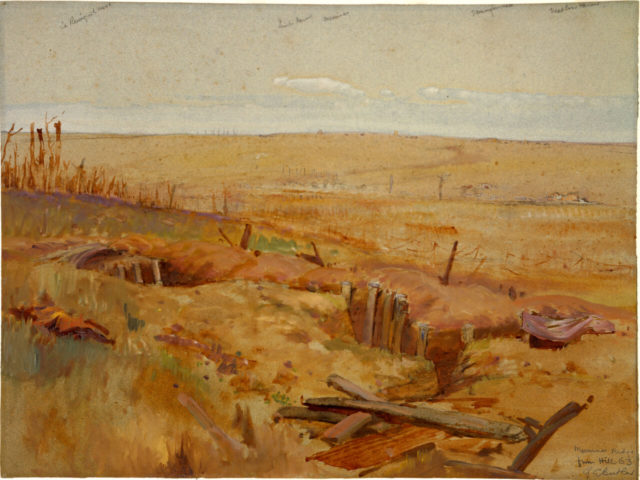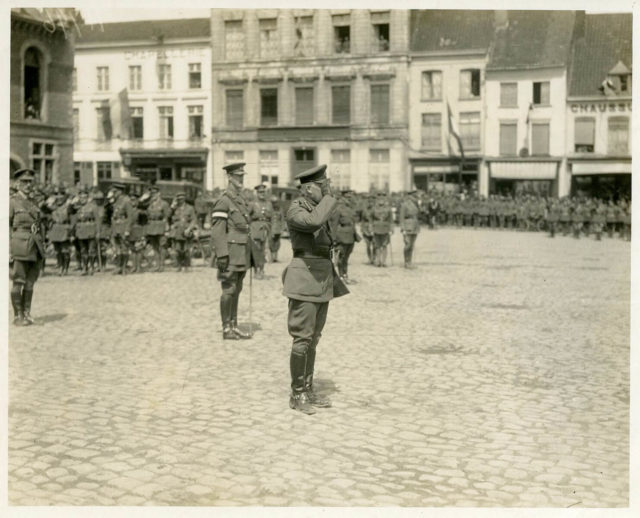During the First World War, Flanders became some of the most hotly contested ground in military history. Thousands upon thousands of men died in trench fighting, much of which never achieved its aims.
There were exceptions. One them was the 1917 assault on Messines Ridge near Ypres.
The Fight for Flanders
The area around Ypres first became important to the war in the autumn of 1914. The Germans and the Allies tried to outflank each other in a series of moves that took the conflict ever further north. It was the sort of mobile warfare the commanders had expected, but in its wake, it created the static trenches of the Western Front. As fight after fight led to a bloody stalemate, soldiers dug in to avoid being shot. Many of them were in the region around Ypres.
Messines Ridge
One of the reasons why Ypres was so significant was that it was surrounded on three sides by ridges of high ground. It was high ground only by the standards of the Low Countries, but that added to its power. With vast flat plains all around, any advantage in height could let an army see for miles.
Of these three ridges, the Messines Ridge lay to the south. It had already been fought over during the preceding Battles of Ypres. In June 1917, it became the sole focus of an attack by soldiers from Britain and her colonies.

Digging Mines
In preparation for the assault, the Allies spent over a year digging tunnels from their lines to areas underneath the German trenches. Twenty-one tunnels ran 2,000 yards from the British lines, ending approximately 100 feet below the Germans. Australian, British, Canadian, and New Zealand miners all contributed to this epic work.
Once the tunnels were in place, chambers were dug at their ends and filled with explosives. Backpacks of ammonal weighing 50 pounds each were hauled down the passageways, packed into hollows beneath the earth, and fitted with fuses.
By the time of the attack, a million pounds of explosives were in place.

Preparing for Battle
The task of taking Messines Ridge was given to the Second Army under General Sir Herbert Plumer. His force consisted of the British IX and X Corps and the II ANZAC Corps, made up of troops from Australia and New Zealand.
Planning and preparation were extensive. A model of the area was built behind a café in Dickebusch to enable officers to study the ground. When German counter-mining threatened British tunnels, officers calculated the Germans could not reach them before the attack, and so they ignored the German mines. Seventeen days before the offensive, an artillery bombardment began to engage the Germans.
The Attack Begins
On June 7, 1917, at 0310, the mines were triggered. Two failed, but the rest went up in the largest non-nuclear explosion ever seen in war. It was so vast that people in England felt the shockwaves and German troops in Lille, well away from the Ypres fighting, thought they were under attack. An estimated 10,000 Germans were killed or buried alive in the blast.
The 2,266 guns of the British artillery immediately opened fire. Their job was to provide a creeping barrage as cover for the infantry to advance.
Allied troops poured out of their trenches, some so quickly they were hit by debris still falling from the detonation of the mines. For once, the preliminary work against the Germans had worked. While assaults elsewhere in the war ran into a hail of machine-gun fire, the troops of the Second Army had an almost clear run.

Taking the Trenches
Stunned by the explosion, German survivors surrendered. So many gave in that men could not be spared to escort them back to British lines. Instead, the New Zealanders cut the buttons from their captives’ trousers so their hands would be occupied keeping them up; then sent them back on their own toward captivity.
All along the line, German trenches fell. By 0700, some of the Allied troops were digging in, reversing the firing platforms to face east.
Elsewhere, the Allies continued advancing, the barrage creeping forward ahead of them in a textbook example of a tactic loved by First World War commanders. Tanks moved up to support an advance into the next line of trenches. Supply tanks brought stores forwards. Artillery was transferred to provide cover.
By 1515, the entire Messines Ridge, fought over so bitterly for two years, was in the hands of Australian, British, and New Zealand troops.

Counter-Attack and Retreat
With the British now advancing down the east slope of Messines Ridge, the Germans had to respond. Army Group Commander Crown Prince Rupprecht launched a counter-attack on June 8. By then, the Allies had dug in, making use of the strong entrenchments taken from the Germans. The counter-attack was soundly beaten.
Prince Rupprecht bowed to the inevitable and began planning a withdrawal. The integrity of the German lines had to be maintained. He drew his troops back east to the River Lys.
British advances then continued over the next few days before the lines stabilized again.
Counting the Cost
Having been starved for so long of good news by the slow, grinding battles of the First World War, the British rejoiced at their success. They had only taken a few miles of ground, but by the standards of the war, it was a tremendous achievement. Critically, they now held the high ground at Messines.
The cost was substantial – 24,562 dead or wounded, 10,521 of them from the ANZACs. It was less than expected; a half to a third of what would have been lost if the attack had worked out as others had done.
The Germans lost 23,000 dead, wounded, or captured. Critically, they also lost their well-developed defenses and the guns with which they were equipped.
Source:
Martin Marix Evans (2002), Over the Top: Great Battles of the First World War.
